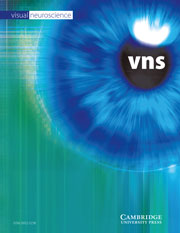Article contents
Contributions of cat posterior parietal cortex to visuospatial discrimination
Published online by Cambridge University Press: 15 December 2000
Abstract
The purpose of the present study was to examine the contributions made by cat posterior parietal cortex to the analyses of the relative position of objects in visual space. Two cats were trained on a landmark task in which they learned to report the position of a landmark object relative to a right or left food-reward chamber. Subsequently, three pairs of cooling loops were implanted bilaterally in contact with visuoparietal cortices forming the crown of the middle suprasylvian gyrus (MSg; architectonic area 7) and the banks of the posterior-middle suprasylvian sulcus (pMS sulcal cortex) and in contact with the ventral-posterior suprasylvian (vPS) region of visuotemporal cortex. Bilateral deactivation of pMS sulcal cortex resulted in a profound impairment for all six tested positions of the landmark, yet bilateral deactivation of neither area 7 nor vPS cortex yielded any deficits. In control tasks (visual orienting and object discrimination), there was no evidence for any degree of attentional blindness or impairment of form discrimination during bilateral deactivation of pMS cortex. Therefore, we conclude that bilateral cooling of pMS cortex, but neither area 7 nor vPS cortex, induces a specific deficit in spatial localization as examined with the landmark task. These observations have significant bearing on our understanding of visuospatial processing in cat, monkey, and human cortices.
- Type
- Research Article
- Information
- Copyright
- 2000 Cambridge University Press
- 12
- Cited by


